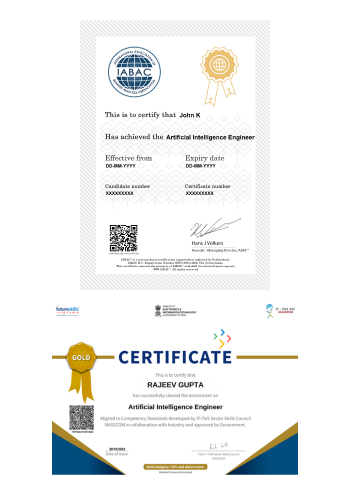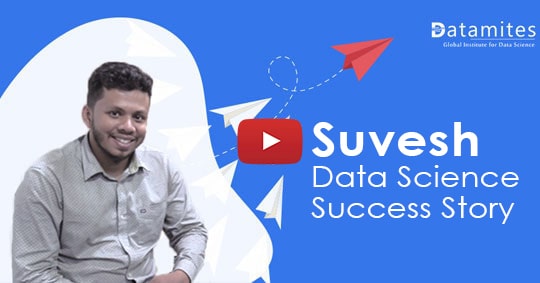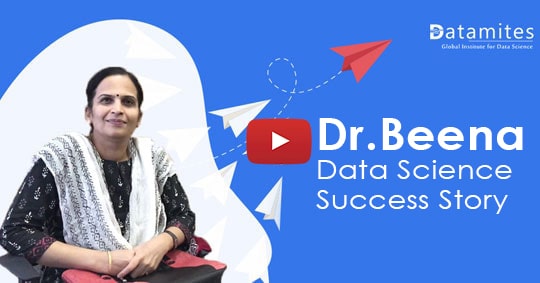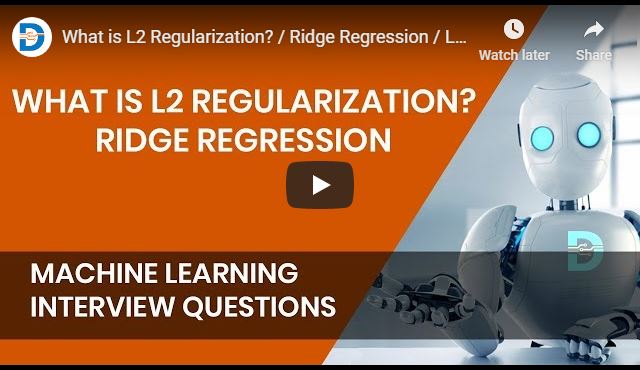
Instructor Led Live Online
Self Learning + Live Mentoring
Customize Your Training
The entire training includes real-world projects and highly valuable case studies.
IABAC® certification provides global recognition of the relevant skills, thereby opening opportunities across the world.
MODULE 1 : ARTIFICIAL INTELLIGENCE OVERVIEW
• Evolution Of Human Intelligence
• What Is Artificial Intelligence?
• History Of Artificial Intelligence
• Why Artificial Intelligence Now?
• Areas Of Artificial Intelligence
• AI Vs Data Science Vs Machine Learning
MODULE 2 : DEEP LEARNING INTRODUCTION
• Deep Neural Network
• Machine Learning vs Deep Learning
• Feature Learning in Deep Networks
• Applications of Deep Learning Networks
MODULE3 : TENSORFLOW FOUNDATION
• TensorFlow Structure and Modules
• Hands-On:ML modeling with TensorFlow
MODULE 4 : COMPUTER VISION INTRODUCTION
• Image Basics
• Convolution Neural Network (CNN)
• Image Classification with CNN
• Hands-On: Cat vs Dogs Classification with CNN Network
MODULE 5 : NATURAL LANGUAGE PROCESSING (NLP)
• NLP Introduction
• Bag of Words Models
• Word Embedding
• Hands-On:BERT Algorithm
MODULE 6 : AI ETHICAL ISSUES AND CONCERNS
• Issues And Concerns Around Ai
• Ai And Ethical Concerns
• Ai And Bias
• Ai:Ethics, Bias, And Trust
MODULE 1 : PYTHON BASICS
• Introduction of python
• Installation of Python and IDE
• Python Variables
• Python basic data types
• Number & Booleans, strings
• Arithmetic Operators
• Comparison Operators
• Assignment Operators
MODULE 2 : PYTHON CONTROL STATEMENTS
• IF Conditional statement
• IF-ELSE
• NESTED IF
• Python Loops basics
• WHILE Statement
• FOR statements
• BREAK and CONTINUE statements
MODULE 3 : PYTHON DATA STRUCTURES
• Basic data structure in python
• Basics of List
• List: Object, methods
• Tuple: Object, methods
• Sets: Object, methods
• Dictionary: Object, methods
MODULE 4 : PYTHON FUNCTIONS
• Functions basics
• Function Parameter passing
• Lambda functions
• Map, reduce, filter functions
MODULE 1 : OVERVIEW OF STATISTICS
• Introduction to Statistics
• Descriptive And Inferential Statistics
• Basic Terms Of Statistics
• Types Of Data
MODULE 2 : HARNESSING DATA
• Random Sampling
• Sampling With Replacement And Without Replacement
• Cochran's Minimum Sample Size
• Types of Sampling
• Simple Random Sampling
• Stratified Random Sampling
• Cluster Random Sampling
• Systematic Random Sampling
• Multi stage Sampling
• Sampling Error
• Methods Of Collecting Data
MODULE 3 : EXPLORATORY DATA ANALYSIS
• Exploratory Data Analysis Introduction
• Measures Of Central Tendencies: Mean,Median And Mode
• Measures Of Central Tendencies: Range, Variance And Standard Deviation
• Data Distribution Plot: Histogram
• Normal Distribution & Properties
• Z Value / Standard Value
• Empherical Rule and Outliers
• Central Limit Theorem
• Normality Testing
• Skewness & Kurtosis
• Measures Of Distance: Euclidean, Manhattan And Minkowski Distance
• Covariance & Correlation
MODULE 4 : HYPOTHESIS TESTING
• Hypothesis Testing Introduction
• P- Value, Critical Region
• Types of Hypothesis Testing
• Hypothesis Testing Errors : Type I And Type II
• Two Sample Independent T-test
• Two Sample Relation T-test
• One Way Anova Test
• Application of Hypothesis testing
MODULE 1: MACHINE LEARNING INTRODUCTION
• What Is ML? ML Vs AI
• Clustering, Classification And Regression
• Supervised Vs Unsupervised
MODULE 2: PYTHON NUMPY PACKAGE
• Introduction to Numpy Package
• Array as Data Structure
• Core Numpy functions
• Matrix Operations, Broadcasting in Arrays
MODULE 3: PYTHON PANDAS PACKAGE
• Introduction to Pandas package
• Series in Pandas
• Data Frame in Pandas
• File Reading in Pandas
• Data munging with Pandas
MODULE 4: VISUALIZATION WITH PYTHON - Matplotlib
• Visualization Packages (Matplotlib)
• Components Of A Plot, Sub-Plots
• Basic Plots: Line, Bar, Pie, Scatter
MODULE 5: PYTHON VISUALIZATION PACKAGE - SEABORN
• Seaborn: Basic Plot
• Advanced Python Data Visualizations
MODULE 6: ML ALGO: LINEAR REGRESSION
• Introduction to Linear Regression
• How it works: Regression and Best Fit Line
• Modeling and Evaluation in Python
MODULE 7: ML ALGO: LOGISTIC REGRESSION
• Introduction to Logistic Regression
• How it works: Classification & Sigmoid Curve
• Modeling and Evaluation in Python
MODULE 8: ML ALGO: K MEANS CLUSTERING
• Understanding Clustering (Unsupervised)
• K Means Algorithm
• How it works : K Means theory
• Modeling in Python
MODULE 9: ML ALGO: KNN
• Introduction to KNN
• How It Works: Nearest Neighbor Concept
• Modeling and Evaluation in Python
MODULE 1: FEATURE ENGINEERING
• Introduction to Feature Engineering
• Feature Engineering Techniques: Encoding, Scaling, Data Transformation
• Handling Missing values, handling outliers
• Creation of Pipeline
• Use case for feature engineering
MODULE 2: ML ALGO: SUPPORT VECTOR MACHINE (SVM)
• Introduction to SVM
• How It Works: SVM Concept, Kernel Trick
• Modeling and Evaluation of SVM in Python
MODULE 3: PRINCIPAL COMPONENT ANALYSIS (PCA)
• Building Blocks Of PCA
• How it works: Finding Principal Components
• Modeling PCA in Python
MODULE 4: ML ALGO: DECISION TREE
• Introduction to Decision Tree & Random Forest
• How it works
• Modeling and Evaluation in Python
MODULE 5: ENSEMBLE TECHNIQUES - BAGGING
• Introduction to Ensemble technique
• Bagging and How it works
• Modeling and Evaluation in Python
MODULE 6: ML ALGO: NAÏVE BAYES
• Introduction to Naive Bayes
• How it works: Bayes' Theorem
• Naive Bayes For Text Classification
• Modeling and Evaluation in Python
MODULE 7: GRADIENT BOOSTING, XGBOOST
• Introduction to Boosting and XGBoost
• How it works?
• Modeling and Evaluation of in Python
MODULE 1: TIME SERIES FORECASTING - ARIMA
• What is Time Series?
• Trend, Seasonality, cyclical and random
• Stationarity of Time Series
• Autoregressive Model (AR)
• Moving Average Model (MA)
• ARIMA Model
• Autocorrelation and AIC
• Time Series Analysis in Python
MODULE 2: SENTIMENT ANALYSIS
• Introduction to Sentiment Analysis
• NLTK Package
• Case study: Sentiment Analysis on Movie Reviews
MODULE 3: REGULAR EXPRESSIONS WITH PYTHON
• Regex Introduction
• Regex codes
• Text extraction with Python Regex
MODULE 4: ML MODEL DEPLOYMENT WITH FLASK
• Introduction to Flask
• URL and App routing
• Flask application – ML Model deployment
MODULE 5: ADVANCED DATA ANALYSIS WITH MS EXCEL
• MS Excel core Functions
• Advanced Functions (VLOOKUP, INDIRECT..)
• Linear Regression with EXCEL
• Data Table
• Goal Seek Analysis
• Pivot Table
• Solving Data Equation with EXCEL
MODULE 6: AWS CLOUD FOR DATA SCIENCE
• Introduction of cloud
• Difference between GCC, Azure,AWS
• AWS Service ( EC2 instance)
MODULE 7: AZURE FOR DATA SCIENCE
• Introduction to AZURE ML studio
• Data Pipeline
• ML modeling with Azure
MODULE 8: INTRODUCTION TO DEEP LEARNING
• Introduction to Artificial Neural Network, Architecture
• Artificial Neural Network in Python
• Introduction to Convolutional Neural Network, Architecture
• Convolutional Neural Network in Python
MODULE 1: DATABASE INTRODUCTION
• DATABASE Overview
• Key concepts of database management
• Relational Database Management System
• CRUD operations
MODULE 2: SQL BASICS
• Introduction to Databases
• Introduction to SQL
• SQL Commands
• MY SQL workbench installation
MODULE 3: DATA TYPES AND CONSTRAINTS
• Numeric, Character, date time data type
• Primary key, Foreign key, Not null
• Unique, Check, default, Auto increment
MODULE 4: DATABASES AND TABLES (MySQL)
• Create database
• Delete database
• Show and use databases
• Create table, Rename table
• Delete table, Delete table records
• Create new table from existing data types
• Insert into, Update records
• Alter table
MODULE 5: SQL JOINS
• Inner join
• Outer join
• Left join
• Right join
• Cross join
• Self join
• Windows functions: Over, Partition , Rank
MODULE 6: SQL COMMANDS AND CLAUSES
• Select, Select distinct
• Aliases, Where clause
• Relational operators, Logical
• Between, Order by, In
• Like, Limit, null/not null, group by
• Having, Sub queries
MODULE 7: DOCUMENT DB/NO-SQL DB
• Introduction of Document DB
• Document DB vs SQL DB
• Popular Document DBs
• MongoDB basics
• Data format and Key methods
MODULE 1: GIT INTRODUCTION
• Purpose of Version Control
• Popular Version control tools
• Git Distribution Version Control
• Terminologies
• Git Workflow
• Git Architecture
MODULE 2: GIT REPOSITORY and GitHub
• Git Repo Introduction
• Create New Repo with Init command
• Git Essentials: Copy & User Setup
• Mastering Git and GitHub
MODULE 3: COMMITS, PULL, FETCH AND PUSH
• Code commits
• Pull, Fetch and conflicts resolution
• Pushing to Remote Repo
MODULE 4: TAGGING, BRANCHING AND MERGING
• Organize code with branches
• Checkout branch
• Merge branches
• Editing Commits
• Commit command Amend flag
• Git reset and revert
MODULE 5: GIT WITH GITHUB AND BITBUCKET
• Creating GitHub Account
• Local and Remote Repo
• Collaborating with other developers
MODULE 1: BIG DATA INTRODUCTION
MODULE 2: HDFS AND MAP REDUCE
MODULE 3: PYSPARK FOUNDATION
MODULE 4: SPARK SQL and HADOOP HIVE
MODULE 1: TABLEAU FUNDAMENTALS
• Introduction to Business Intelligence & Introduction to Tableau
• Interface Tour, Data visualization: Pie chart, Column chart, Bar chart.
• Bar chart, Tree Map, Line Chart
• Area chart, Combination Charts, Map
• Dashboards creation, Quick Filters
• Create Table Calculations
• Create Calculated Fields
• Create Custom Hierarchies
MODULE 2: POWER-BI BASICS
• Power BI Introduction
• Basics Visualizations
• Dashboard Creation
• Basic Data Cleaning
• Basic DAX FUNCTION
MODULE 3 : DATA TRANSFORMATION TECHNIQUES
• Exploring Query Editor
• Data Cleansing and Manipulation:
• Creating Our Initial Project File
• Connecting to Our Data Source
• Editing Rows
• Changing Data Types
• Replacing Values
MODULE 4 : CONNECTING TO VARIOUS DATA SOURCES
• Connecting to a CSV File
• Connecting to a Webpage
• Extracting Characters
• Splitting and Merging Columns
• Creating Conditional Columns
• Creating Columns from Examples
• Create Data Model
MODULE 1: NEURAL NETWORKS
• Structure of neural networks
• Neural network - core concepts(Weight initialization)
• Neural network - core concepts(Optimizer)
• Neural network - core concepts(Need of activation)
• Neural network - core concepts(MSE & RMSE)
• Feed forward algorithm
• Backpropagation
MODULE 2: IMPLEMENTING DEEP NEURAL NETWORKS
• Introduction to neural networks with tf2.X
• Simple deep learning model in Keras (tf2.X)
• Building neural network model in TF2.0 for MNIST dataset
MODULE 3: DEEP COMPUTER VISION - IMAGE RECOGNITION
• Convolutional neural networks (CNNs)
• CNNs with Keras-part1
• CNNs with Keras-part2
• Transfer learning in CNN
• Flowers dataset with tf2.X(part-1)
• Flowers dataset with tf2.X(part-2)
• Examining x-ray with CNN model
MODULE 4 : DEEP COMPUTER VISION - OBJECT DETECTION
• What is Object detection
• Methods of Object Detections
• Metrics of Object detection
• Bounding Box regression
• labelimg
• RCNN
• Fast RCNN
• Faster RCNN
• SSD
• YOLO Implementation
• Object detection using cv2
MODULE 5: RECURRENT NEURAL NETWORK
• RNN introduction
• Sequences with RNNs
• Long short-term memory networks(part 1)
• Long short-term memory networks(part 2)
• Bi-directional RNN and LSTM
• Examples of RNN applications
MODULE 6: NATURAL LANGUAGE PROCESSING (NLP)
• Introduction to Natural language processing
• Working with Text file
• Working with pdf file
• Introduction to regex
• Regex part 1
• Regex part 2
• Word Embedding
• RNN model creation
• Transformers and BERT
• Introduction to GPT (Generative Pre-trained Transformer)
• State of art NLP and projects
MODULE 7: PROMPT ENGINEERING
• Introduction to Prompt Engineering
• Understanding the Role of Prompts in AI Systems
• Design Principles for Effective Prompts
• Techniques for Generating and Optimizing Prompts
• Applications of Prompt Engineering in Natural Language Processing
MODULE 8: REINFORCEMENT LEARNING
• Markov decision process
• Fundamental equations in RL
• Model-based method
• Dynamic programming model free methods
MODULE 9: DEEP REINFORCEMENT LEARNING
• Architectures of deep Q learning
• Deep Q learning
• Reinforcement Learning Projects with OpenAI Gym
MODULE 10: Gen AI
• Gan introduction, Core Concepts, and Applications
• Core concepts of GAN
• GAN applications
• Building GAN model with TensorFlow 2.X
• Introduction to GPT (Generative Pre-trained Transformer)
• Building a Question answer bot with the models on Hugging Face
MODULE 11: Gen AI
• Introduction to Autoencoder
• Basic Structure and Components of Autoencoders
• Types of Autoencoders: Vanilla, Denoising, Variational, Sparse, and Convolutional Autoencoders
• Training Autoencoders: Loss Functions, Optimization Techniques
• Applications of Autoencoders: Dimensionality Reduction, Anomaly Detection, Image
Artificial Intelligence (AI) entered the mainstream and revolutionized the way we do business. AI is increasingly being adopted in automating many jobs with much higher productivity, lower cost, and scalable solutions. It is reported by PWC in a publication that about 50% of human jobs will be taken away by the AI in the next 5 years. There is already a big demand for AI specialists and this demand will be exponentially growing in the coming years.
DataMites Artificial Intelligence course is designed to lay a strong foundation of AI basics and build on skills aligned to current industry requirements, to get you ready for an AI career. This course covers popular Deep Learning algorithms: Convolutional Networks, BatchNorm, RNNS, etc., with the case studies from autonomous driving, healthcare, Natural language processing, etc.,
Artificial Intelligence is revolutionizing the way business. Learning Deep Learning will make you a scare, highly in demand resource and has the potential to supercharge your career growth. In simple words, this course will help you build a career in the most coveted domain, AI.
This course is an advanced course, professionals with essential knowledge in Machine Learning and aspiring to be an AI specialist can opt.
This course covers most of the popular AI, deep learning algorithms along with the application case study. This course will help you build an AI career in an effective manner.
DataMites™ is the global institute for Data Science accredited by International Association of Business Analytics Certifications (IABAC). DataMites provides flexible learning options from Classroom training, Live Online to high quality recorded sessions
The 6 Key reasons to choose Data Mites™
IABAC™ Accredited
Elite Faculty & Mentors
Learning Approach
10+ Industry Projects
PAT (Placement Assistance Team)
24x7 Cloud Lab for ONE year
Artificial Intelligence (AI) refers to the utilization of computers and technology to simulate human intelligence, including problem-solving and decision-making abilities.
John McCarthy, a professor emeritus of computer science at Stanford University, introduced the term "artificial intelligence" for the first time.
NLP stands for Natural Language Processing, which is a branch of artificial intelligence that focuses on computers' ability to understand and interpret human language.
AI is extensively used in various industries for personalized recommendations, product optimization, inventory planning, logistics, and more.
Learning Artificial Intelligence opens up numerous career opportunities in industries leveraging AI and machine learning technologies. It also provides a competitive edge and higher earning potential.
Anyone interested in learning Artificial Intelligence, from beginners to professionals, can enroll. There are options for engineers, marketing professionals, software and IT professionals, and regular courses for individuals with basic high school education.
Prerequisites for learning Artificial Intelligence include computer programming skills, knowledge of statistics and probability, data modeling, data validation, and design. Non-technical skills such as critical thinking, curiosity, and passion for math and science are also beneficial.
Artificial Intelligence can be challenging, but with dedication and interest, it is achievable. The level of difficulty depends on the individual, and the field of AI holds great potential for the future.
Some of the popular AI software development tools include Microsoft Azure AI Platform, Google Cloud AI Platform, IBM Watson, Infosys Nia, Dialog Flow, and BigML.
Artificial Intelligence finds applications in various fields, including travel, healthcare, sales, credit and insurance, marketing, social media, automation, and many more.
Artificial Intelligence Certification is essential as it demonstrates expertise and knowledge in AI, making individuals valuable assets for organizations seeking AI professionals in today's technology-driven world.
According to Glassdoor.com:
The Artificial Intelligence Engineer Salary in United States is USD $1,05,634 per year.
The national average salary for an Artificial Intelligence Engineer in UK is £52,712 per annum.
The national average salary for an Artificial Intelligence Engineer in India is INR ₹9,44,075 per year.
DataMites™ provide flexible learning options from traditional classroom training, latest virtual live classroom to distance course. Based on your location preference, you may have one or more learning options
This course is perfectly aligned to the current industry requirements and gives exposure to all latest techniques and tools. The course curriculum is designed by specialists in this field and monitored improved by industry practitioners on continual basis.
All certificates can be validated with your unique certification number at IABAC.org portal. You also get candidate login at exam.iabac.org , where can find your test results and other relevant validation details.
The results of the Exam are immediate, if you take online test at exam.iabac.org portal. The certificate issuance, as per IABAC™ terms, takes about 7-10 bussiness days for e-certificate.
No, the exam fees are already included in the course fee and you will not be charged extra.
Course fee needs to be paid in one payment as it is required to block your seat for the entire course as well as book the certification exams with IABAC™. In case, if you have any specific constrains, your relation manager at DataMites™ shall assist you with part payment agreements
DataMites™ has a dedicated Placement Assistance Team(PAT), who work with candidates on individual basis in assisting for right Data Science job.
You get 100% refund training fee if you the training is not to your satisfaction but the exam fee will not be refunded as we pay to accreditation bodies. If the refund is due to your availability concerns, you may need to talk to the relationship manager and will be sorted out on case to case basis
DataMites™ provides loads of study materials, cheat sheets, data sets, videos so that you can learn and practice extensively. Along with study materials, you will get materials on job interviews, new letters with latest information on Data Science as well as job updates.
DataMites provides certifications in various Artificial Intelligence courses, including Artificial Intelligence Engineer, Artificial Intelligence Expert, Certified NLP Expert, Artificial Intelligence for Managers, and Artificial Intelligence Foundation.
The duration of the Artificial Intelligence course varies depending on the specific course you choose, ranging from 1 month to a year. Training sessions are available on weekdays and weekends to accommodate different schedules.
To learn Artificial Intelligence, you can enroll in the Artificial Intelligence Course offered by DataMites. The course provides comprehensive instruction and prepares you for future career opportunities in the field.
The objective of the AI Engineer course is to provide individuals with the necessary knowledge and abilities to develop intelligent algorithms capable of analyzing data, making predictions, and addressing intricate problems. This is accomplished through the utilization of various techniques such as deep learning, machine learning, computer vision, and natural language processing. The course aims to equip participants with the expertise needed to succeed as AI Engineers in the field of artificial intelligence.
The Certified NLP Expert course focuses on developing and applying natural language processing skills in real-world scenarios. It explores various methods and approaches to harness the potential of Natural Language Processing.
The Artificial Intelligence for Managers Course is designed to enable executives and managers to leverage AI knowledge in their organizations. It helps them understand the employability and potential impact of AI at different levels within a company.
The AI Foundation Course is a beginner's course that provides a comprehensive understanding of AI, its applications, and real-world examples. It caters to individuals with or without technical backgrounds, covering concepts like machine learning, deep learning, and neural networks.
DataMites is a globally recognized institute for Artificial Intelligence accredited by the International Association of Business Analytics Certification (IABAC). With a large number of enrolled students, DataMites offers a three-step learning approach, including self-study materials, live online training, and real-world projects. Upon completion, you receive an IABAC certification and internship opportunities with AI company Rubixe.
The Artificial Intelligence Course Fee varies depending on the course and mode of training. In the USA, the range is from 272 USD to 1910 USD, in India it's from 14,595 INR to 101,745 INR, and in UK, it's from GBP 450 to GBP 1521.
Yes, DataMites provides classroom training, primarily in Bangalore. However, they can organize training in other locations based on demand and the availability of candidates.
The trainers at DataMites are certified and highly qualified professionals with extensive industry experience and expertise in the subject matter.
Flexi-Pass at DataMites allows you to attend sessions related to any queries or revisions for a period of 3 months after the training.
Yes, upon completion, DataMites will provide you with an IABAC certification that holds global recognition of your acquired skills.
Yes, DataMites will issue a Course Completion Certificate after you have successfully completed the course.
You need to carry valid photo ID proofs such as a National ID card or driving license for issuing the participation certificate and booking the certification exam.
If you miss a session, you can coordinate with your instructors to schedule a makeup class at your convenience. In the case of online training, recorded sessions will be available for you to catch up on any missed content.
Yes, DataMites offers a free demo class to provide an overview of the training and its content.
Yes, DataMites has a dedicated Placement Assistance Team (PAT) that offers placement facilities to candidates upon completion of the course. The PAT assists with job connections, resume creation, mock interviews, and interview question discussions.
The Placement Assistance Team at DataMites assists candidates in various aspects of starting their careers in Artificial Intelligence. This includes making job connections, creating effective resumes, conducting mock interviews with industry professionals, and discussing interview-related questions.
The career mentoring sessions at DataMites are designed to guide applicants in understanding the opportunities and challenges in the field of Artificial Intelligence. Industry experts provide insights into different career paths and help applicants gain a comprehensive understanding of their options and ways to overcome obstacles.
DataMites follows a case study approach to learning, which involves theory, hands-on practice, case studies, project implementation, and model deployment.
Yes, you can request support sessions to clarify any doubts or gain a better understanding of the topics covered in the training.
DataMites accepts various payment methods, including cash, net banking, check, debit card, credit card, PayPal, Visa, Mastercard, and American Express.
The DataMites Placement Assistance Team(PAT) facilitates the aspirants in taking all the necessary steps in starting their career in Data Science. Some of the services provided by PAT are: -
The DataMites Placement Assistance Team(PAT) conducts sessions on career mentoring for the aspirants with a view of helping them realize the purpose they have to serve when they step into the corporate world. The students are guided by industry experts about the various possibilities in the Data Science career, this will help the aspirants to draw a clear picture of the career options available. Also, they will be made knowledgeable about the various obstacles they are likely to face as a fresher in the field, and how they can tackle.
No, PAT does not promise a job, but it helps the aspirants to build the required potential needed in landing a career. The aspirants can capitalize on the acquired skills, in the long run, to a successful career in Data Science.












